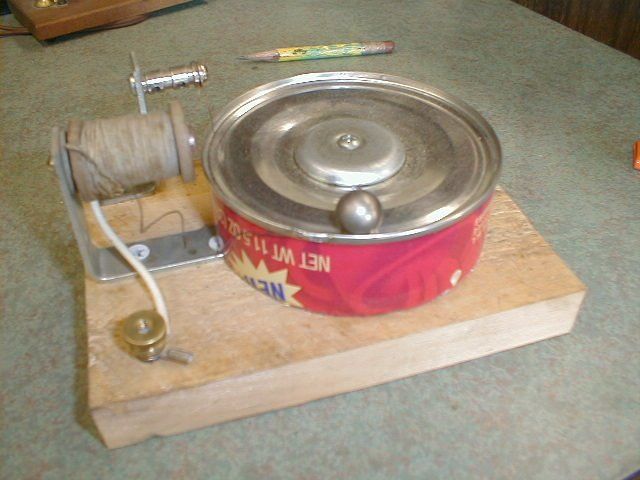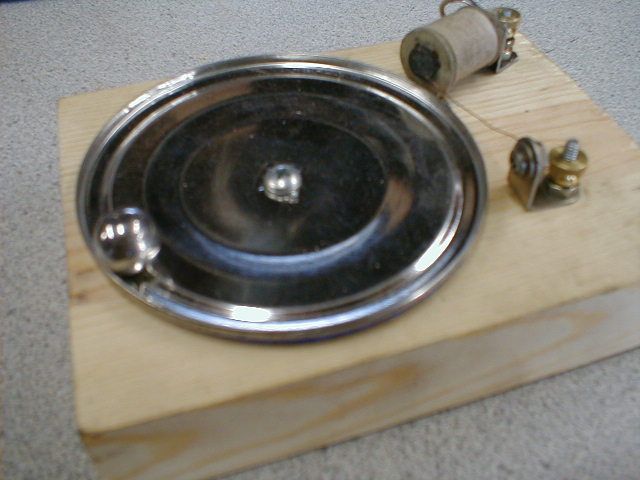I'll dig them out and post some close ups. Hmm, now If I can find them.
If I remember correctly, the article was very incomplete.
Construction details would depend mostly on what parts you can conjure up.
The can should be the easy part.

GUS
Just went back and looked at the pictures I posted previously, the one on the right is pretty much what the magazine showed.
The other was a really simplified version.
I had one with a guardrail to help keep the ball in the arena.
These pics are in my puter. Here's the opposite side:

This is a very simple version. The coil is hooked to a battery (battery size depends on trial and error, usually one or two D cells), it doesn't take a lot of voltage. The remaining wire of the coil connects (under the base) with he fine wire on the right, which is the trigger wire and grounds the ball to the can lid to complete the circuit.
Although it looks it, the trigger wire does not contact the contact the core of the coil.

Just noticing, on the first pic, the coil lead is soldered to the can lid to and the trigger is the ground. Doesn't much matter how you configure he circuit.



































































